1.5 millionth archaeological object unearthed by the public – But what about Shropshire?
The British Museum’s Portable Antiquities Scheme has reached an incredible milestone after recording the 1.5 millionth archaeological find that was discovered by the public, and it was found in Shropshire.
Since its launch in 1997, the Portable Antiquities Scheme (PAS) has dramatically changed archaeology by encouraging finders to bring objects they find forward for recording. The item that helped cross this historic milestone was a medieval lead papal bulla (a seal for authorising papal documents, such as edicts and indulgencies) of Pope Innocent IV (r.1243-54), that was found in Shropshire.
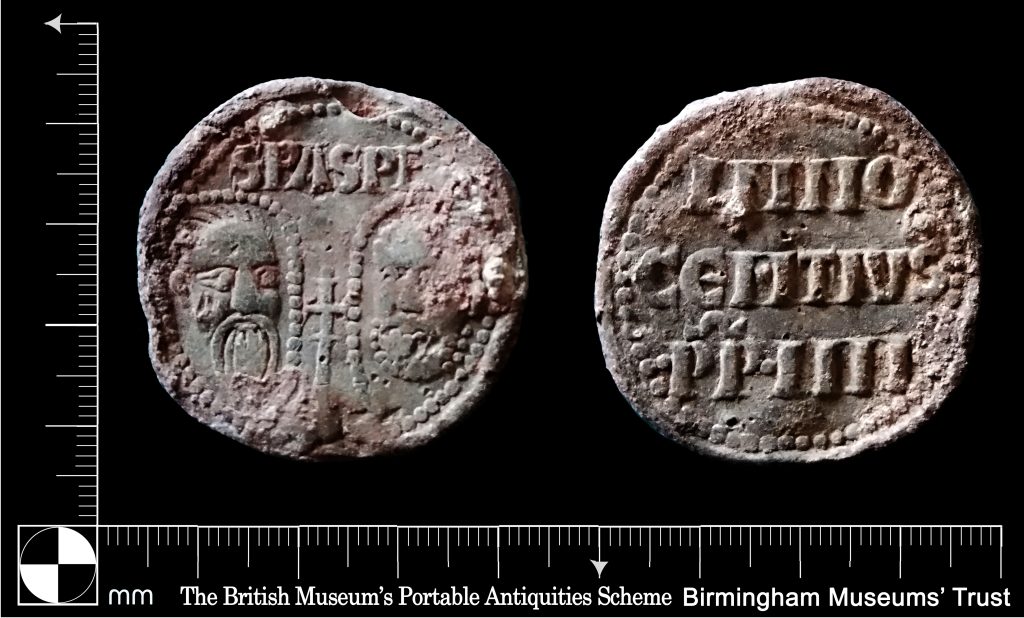
The Bridgnorth Bulla was the 1.5 millionth archaeological discovery recorded by the PAS.
Peter Reavill, Finds Liaison Officer with PAS, said:
“The findspot is from the Bridgnorth area, Shropshire and the find has been reported virtually / digitally due to COVID-19 restrictions. This time has been used by many finders to organise their finds in order to have them recorded by PAS.
“Papal bullae are lead alloy seals that authenticate documents issued by the Pope in Rome (or Avignon during the Papal Schism 1378-1418). They would be attached to the document by a thick woven cord that passes through their centre. In the 1,500,000 artefacts recorded by PAS there are around 575 bullae dating from the Early Medieval period (Pope Leo III AD 795-816 and Pascal I AD 8167-824) to the English Reformation and the dissolution of the monasteries under Henry VIII (bulla of Pope Paul III AD 1534-49). It is likely that many of these bullae were attached to documents relating to the buying of indulgencies (time out of purgatory in return for money / land donated to the church). It is the buying and selling of indulgencies that led in part to the Reformation.
“To date the PAS have recorded 59 bulla of Innocent IV (1243-54) and this example from Shropshire is the 9th Bulla from all periods discovered within county.”
Emma-Kate Lanyon, Curator at Shropshire Museums, said:
“The data the Portable Antiquities Scheme generates about what is being found both locally and nationally, has helped us to better grasp the context of objects in our museums. We now have a far better understanding of whether certain types of artefact are common or rare and their distribution. This sort of data really helps us to comprehend how certain objects were used, exchanged and deposited.
“Working with our local Finds Liaison Officer, the scheme has also allowed us to develop our collections by acquiring key objects and fill in gaps. As a result, our museums are better at telling Shropshire’s story. Some finders and landowners generously donate their finds. Others are happy to work with us to loan finds or allow us to purchase them with financial support from our Museum Friends groups and other charities. This has greatly enhanced both our museum displays across the county but also provides a vital resource behind the scenes for future research and study.”
Here are six of the most important archaeological objects discovered in Shropshire and on display with Shropshire Museums.
Westbury Axe-Hammer
Not all finds of significance are made from precious metal. This stone axe-hammer was brought in for identification after it was found in a water channel at Westbury, Shropshire in 2013.
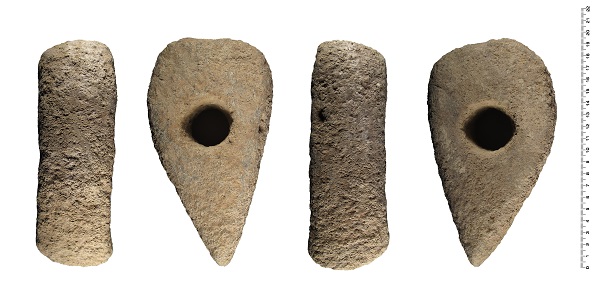
The Westbury Axe Hammer
Axe-hammers of this type are the most common type discovered in Shropshire and the Marches area. This is due to the stone being sourced from a site at Corndon Hill, Shropshire.
During the Late Neolithic to Early Bronze Age date (2500-1800 BC) a range of perforated stone tools were produced. These include axe-hammers and mace heads. The differences between each of these types of artefact and how they were used is still uncertain. Therefore, additional finds and data is key for archaeological research and study to understand them better.
This example was donated to Shropshire Museums and is currently available for research and study by appointment at Shropshire Museums Collections Centre.
Shropshire Iron Age Spoons
In 2005 an unusual pair of bronze spoons were found by a metal detectorist searching in the Oswestry area. These spoons belong to a well-known, if rare, type of Iron Age object. Until this discovery there were only 23 examples known. Apart from one find in France, these spoons have only been discovered in Britain and Ireland, usually as pairs.
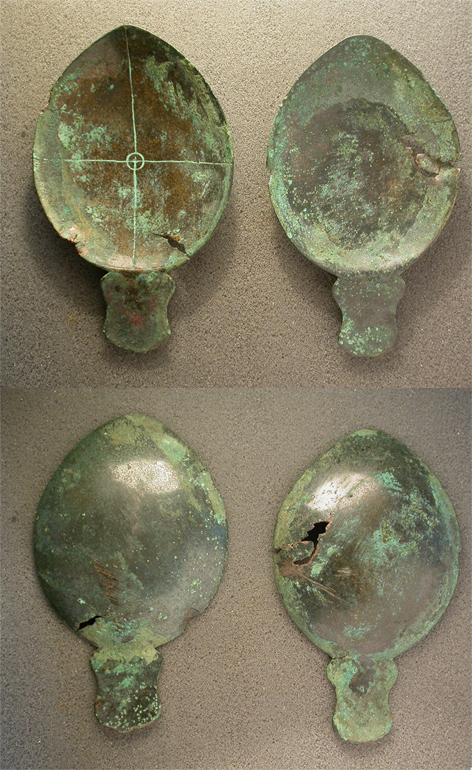
Iron Age spoons found in Shropshire
Their function is unknown, but they clearly belong as a pair with one spoon bowl divided by a cross and the other plain but with a single perforated hole near one side approximately half way down the spoon.
The rarity of such a find make the Shropshire Iron Age Spoons a find of national importance. They were acquired with assistance of Friends of Shrewsbury Museum and Art Gallery, The V&A Purchase Grant Fund and Art Fund and can be seen on display at Shrewsbury Museum and Art Gallery.
Easton Constantine Amulet Capsule
In 2001 a metal detectorist discovered this gold Roman amulet or talisman capsule. It would have contained either a rectangular plaque (lamella) of thin gold sheet, lightly incised with a text and magical symbols or a mixture of substances such as sulphur, beeswax or haematite. Such amulets were worn as a protection against evil or disease.
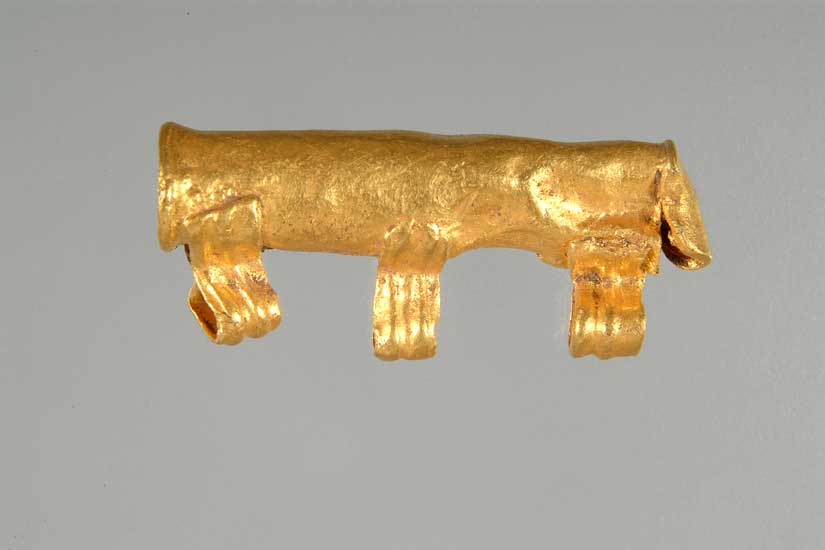
The Easton Constantine Amulet
Very few inscribed gold amulets are known from Britain. The only other complete example to date (in Britain) is from the 4th century AD Thetford Hoard. This example was acquired with assistance from Friends of Shrewsbury Museum and Art Gallery and can be seen at Shrewsbury Museum and Art Gallery.
Since the Easton Constantine Amulet Capsule was discover second example has been found in the County which Shropshire Museums hopes to acquire. Research suggests that these items may be associated with a specific religious group and are evidence for the presence of a small Eastern immigrant community in the area in Roman times.
West Shropshire Pendant
The West Shropshire pendant was discovered by metal detectorists in 2004. This remarkable Anglo-Saxon pendant is composed of a well-polished garnet surrounded by a border of small rectangular notched cloisonné garnets set over waffle-pattern gold foil.
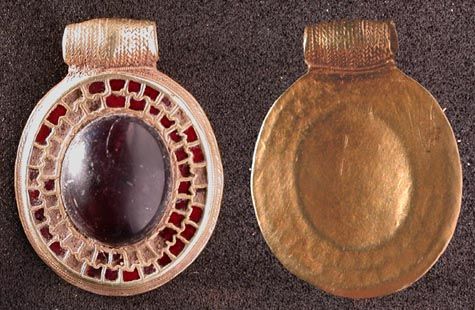
Saxon Pendant
The pendant would probably have been part of a high-status necklace of several such pieces strung together. Complete necklaces are very rare and are usually found in high status graves of the period.
This type of high-status Anglo-Saxon metalwork is almost without precedent in Shropshire. In fact, until the Portable Antiquities Scheme was introduced, early medieval finds in general were rare in the county, making this find all the more significant. The workmanship of the pedant is very fine and suggests that the piece was made in Kent. It is comparable to the only similar find from the county, the Dinham Pommel (on display at Ludlow Museum). The pedant was acquired with assistance from the Friends of Ludlow Museum, the Ludlow Museum Development Trust, The V&A Museum Purchase Fund, The Headley Trust and the Arts Fund.
Myddle Medieval Doublas Hoard
The Myddle Medieval hoard was found by metal detectorist in September 2007. All the coins found are Spanish gold and were deposited together at some time in the late 1360s-1370s. The coins were minted during the reign of Peter I, King of Castile (known as ‘Pedro the Cruel’) and were struck at Castile’s main mint in Seville.
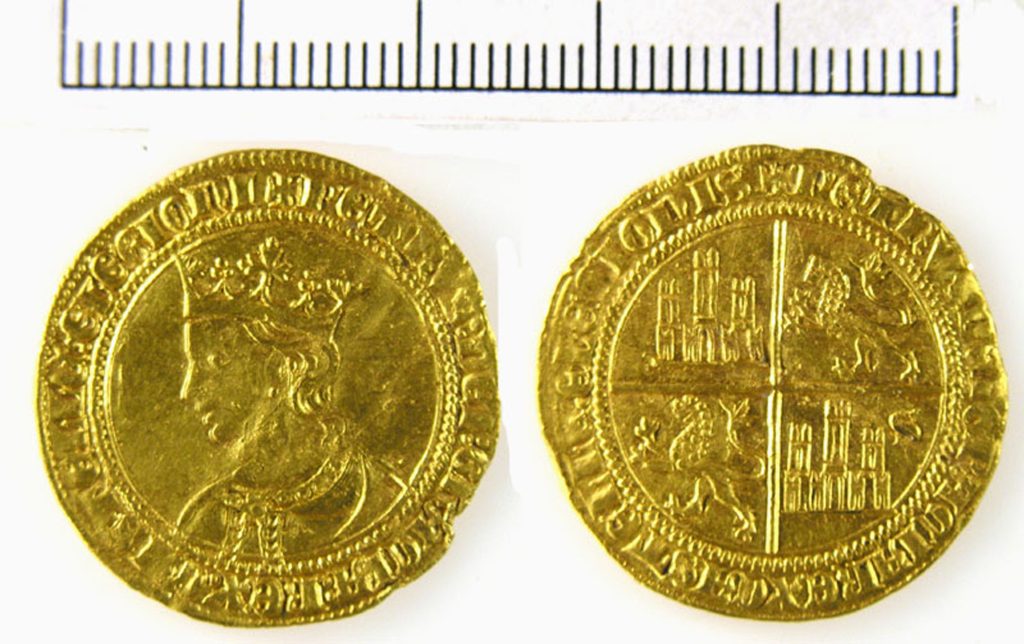
Coins from the Doublas hoard
The best explanation for the presence of these coins in England is that the sons of King Edward III were heavily involved in Castilian politics. In 1367 Edward’s eldest son, the Black Prince, led an army to restore Pedro I to power. Pedro was murdered two years later, but in 1371 Edward’s fourth son John of Gaunt married Pedro’s daughter Constance, and subsequently sought to claim Castile in her name. The coins found at Myddle could well have been the possession of a follower of the Black Prince who returned from the successful 1367 campaign, possibly a member of the Le Strange family of Myddle Castle.
Gold coins of the 14th century are not frequent finds. These are the first examples of gold coinage of this period from the Spanish kingdoms to be found in Britain. Because of their importance, the hoard was divided between the British Museum and Shropshire Museums. The hoard was acquired with assistance from the Shropshire History & Archaeology Society, the Art Fund and the V&A Purchase Fund and can be seen at Shrewsbury Museum and Art Gallery.
Bitterley Civil War Coin Hoard
The Bitterley Hoard was found in February 2011 by a metal-detectorist and with their help it was archaeologically excavated. The hoard consists of one gold and 137 high denomination silver coins. The coins were inside a high-quality leather purse which was placed within a pottery mug called a tyg. The earliest coin was from the reign of Edward VI and the latest from Charles I, indicating that the hoard was buried after early 1644.
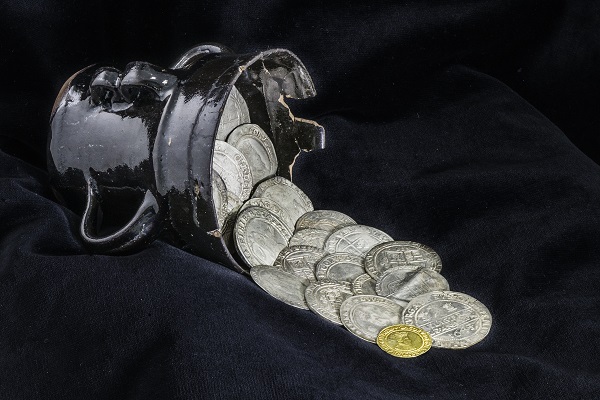
The Bitterley hoard
At this time the English Civil War was raging with castles such as Hopton in South Shropshire being captured by Royalist troops. This was also the year that King Charles I was based in Shrewsbury for a period. With the war raging in the County many prominent families would have hidden their wealth in case of attack. The Bitterley Hoard is the largest surviving hoard this date from Shropshire. It was acquired for display at Ludlow Museum with assistance from the Friends of Ludlow Museum, The Art Fund, The V&A Purchase Fund and The Headley Trust.

